 W
WAlphaServer is the name given to a series of server computers, produced from 1994 onwards by Digital Equipment Corporation, and later by Compaq and HP. As the name suggests, the AlphaServers were based on the DEC Alpha 64-bit microprocessor. Supported operating systems for AlphaServers are Tru64 UNIX, OpenVMS, MEDITECH MAGIC and Windows NT, while enthusiasts have provided alternative operating systems such as Linux, NetBSD, OpenBSD and FreeBSD.
 W
WDEC 3000 AXP was the name given to a series of computer workstations and servers, produced from 1992 to around 1995 by Digital Equipment Corporation. The DEC 3000 AXP series formed part of the first generation of computer systems based on the 64-bit Alpha AXP architecture. Supported operating systems for the DEC 3000 AXP series were DEC OSF/1 AXP and OpenVMS AXP.
 W
WDEC GT40 is a VT11 vector graphic terminal produced by the Digital Equipment Corporation, first introduced in October, 1972.
 W
WThe Professional 325 (PRO-325), Professional 350 (PRO-350), and Professional 380 (PRO-380) were PDP-11 compatible microcomputers introduced in 1982 by Digital Equipment Corporation (DEC) as high-end competitors to the IBM PC.
 W
WThe PDP-11 is a series of 16-bit minicomputers sold by Digital Equipment Corporation (DEC) from 1970 into the 1990s, one of a set of products in the Programmed Data Processor (PDP) series. In total, around 600,000 PDP-11s of all models were sold, making it one of DEC's most successful product lines. The PDP-11 is considered by some experts to be the most popular minicomputer.
 W
WThe DECstation was a brand of computers used by DEC, and refers to three distinct lines of computer systems—the first released in 1978 as a word processing system, and the latter two both released in 1989. These comprised a range of computer workstations based on the MIPS architecture and a range of PC compatibles. The MIPS-based workstations ran Ultrix, a DEC-proprietary version of UNIX, and early releases of OSF/1.
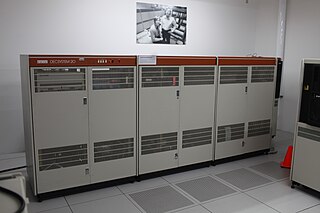 W
WThe DECSYSTEM-20 was a 36-bit Digital Equipment Corporation PDP-10 mainframe computer running the TOPS-20 operating system.
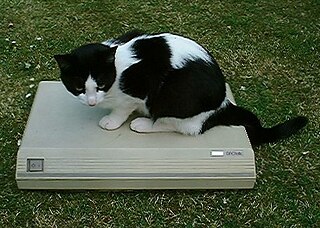 W
WDECtalk was a speech synthesizer and text-to-speech technology developed by Digital Equipment Corporation in 1984, based largely on the work of Dennis Klatt at MIT, whose source-filter algorithm was variously known as KlattTalk or MITalk.
 W
WDECtape, originally called Microtape, is a magnetic tape data storage medium used with many Digital Equipment Corporation computers, including the PDP-6, PDP-8, LINC-8, PDP-9, PDP-10, PDP-11, PDP-12, and the PDP-15. On DEC's 32-bit systems, VAX/VMS support for it was implemented but did not become an official part of the product lineup.
 W
WDigital Linear Tape is a magnetic tape data storage technology developed by Digital Equipment Corporation (DEC) from 1984 onwards. In 1994, the technology was purchased by Quantum Corporation, who manufactured drives and licensed the technology and trademark. A variant with higher capacity is called Super DLT (SDLT). The lower cost "value line" was initially manufactured by Benchmark Storage Innovations under license from Quantum. Quantum acquired Benchmark in 2002.
 W
WFlip-Chip electronic modules were components of digital logic systems made by the Digital Equipment Corporation (DEC) for its PDP-7, PDP-8, PDP-9, and PDP-10, beginning on August 24, 1964. The trademark "Flip-Chip"' was filed on August 27, 1964. Various manuals produced by DEC refer to the modules as "FLIP CHIP", "FLIP-CHIP", "Flip Chip", and "Flip-Chip", with trademark and registered trademark symbols.
 W
WFoonly Inc. was an American computer company formed by Dave Poole in 1976, that produced a series of DEC PDP-10 compatible computers, named Foonly F-1 to Foonly F-5.
 W
WThe Gold key is a computer keyboard key used as a prefix to invoke a variety of single-key editing and formatting functions. Usually located in the top-left position of the numeric keypad on platforms such as the VT100, it is the signature element of a consistent user interface implemented by Digital Equipment Corporation across multiple product lines.
 W
WThe LINC is a 12-bit, 2048-word transistorized computer. The LINC is considered by some the first minicomputer and a forerunner to the personal computer. Originally named the "Linc", suggesting the project's origins at MIT's Lincoln Laboratory, it was renamed LINC after the project moved from the Lincoln Laboratory. The LINC was designed by Wesley A. Clark and Charles Molnar.
 W
WLINC-8 was the name of a minicomputer manufactured by Digital Equipment Corporation between 1966 and 1969. It combined a LINC computer with a PDP-8 in one cabinet, thus being able to run programs written for either of the two architectures.
 W
WThe LK421 was a detachable computer keyboard manufactured by Digital Equipment Corporation of Maynard, Massachusetts and supplied as an option to the standard LK401 keyboard with their DEC 3000 AXP workstations. The keyboard is optimized for use with the Digital Unix line of operating systems, instead of the OpenVMS operating system for which the LK401 was more suitable.
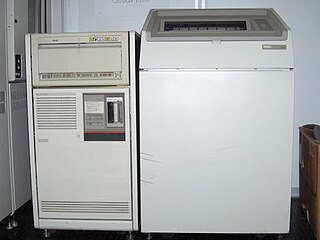 W
WThe MicroVAX was a family of low-cost minicomputers developed and manufactured by Digital Equipment Corporation (DEC). The first model, the MicroVAX I, was introduced in 1983. They used processors that implemented the VAX instruction set architecture (ISA) and were succeeded by the VAX 4000.
 W
WThe PDP-1 is the first computer in Digital Equipment Corporation's PDP series and was first produced in 1959. It is famous for being the computer most important in the creation of hacker culture at MIT, BBN and elsewhere. The PDP-1 is the original hardware for playing history's first game on a minicomputer, Steve Russell's Spacewar!
 W
WThe PDP-4 was the successor to the Digital Equipment Corporation's PDP-1.
 W
WThe PDP-6 is a computer model developed by Digital Equipment Corporation (DEC) in 1964. It was influential primarily as the prototype (effectively) for the later PDP-10; the instruction sets of the two machines are almost identical.
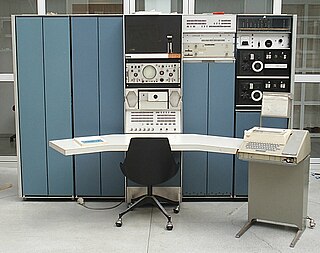 W
WThe PDP-7 was a minicomputer produced by Digital Equipment Corporation as part of the PDP series. Introduced in 1964, shipped since 1965, it was the first to use their Flip-Chip technology. With a cost of US$72,000, it was cheap but powerful by the standards of the time. The PDP-7 is the third of Digital's 18-bit machines, with essentially the same instruction set architecture as the PDP-4 and the PDP-9.
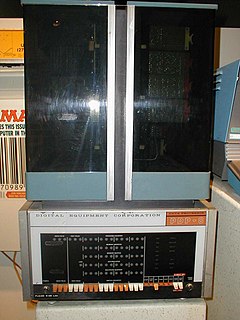 W
WThe PDP-8 is a 12-bit minicomputer that was produced by Digital Equipment Corporation (DEC). It was the first commercially successful minicomputer, with over 50,000 units being sold over the model's lifetime. Its basic design follows the pioneering LINC but has a smaller instruction set, which is an expanded version of the PDP-5 instruction set. Similar machines from DEC are the PDP-12 which is a modernized version of the PDP-8 and LINC concepts, and the PDP-14 industrial controller system.
 W
WDigital Equipment Corporation (DEC)'s PDP-10, later marketed as the DECsystem-10, is a mainframe computer family manufactured beginning in 1966 and discontinued in 1983. 1970s models and beyond were marketed under the DECsystem-10 name, especially as the TOPS-10 operating system became widely used.
 W
WThe PDP-11 is a series of 16-bit minicomputers sold by Digital Equipment Corporation (DEC) from 1970 into the 1990s, one of a set of products in the Programmed Data Processor (PDP) series. In total, around 600,000 PDP-11s of all models were sold, making it one of DEC's most successful product lines. The PDP-11 is considered by some experts to be the most popular minicomputer.
 W
WThe PDP-12 was created by Digital Equipment Corporation (DEC) in 1969 and was marketed specifically for science and engineering. It was the third in the LINC family and its main uses were for applications in chemistry, applied psychology, patient monitoring and industrial testing. It is the combination of the LINC computer and the PDP-8 and can run programs for either computer. It features a single central processor with two distinct operating modes, each with its own instruction set that allows it to run both computers' programs. PDP-12 Basic System weighed about 600 pounds (270 kg).
 W
WThe PDP-15 was the fifth and last of the 18-bit minicomputers produced by Digital Equipment Corporation. The PDP-1 was first delivered in December 1959 and the first PDP-15 was delivered in February 1970. More than 400 of these successors to the PDP-9 were ordered within the first eight months.
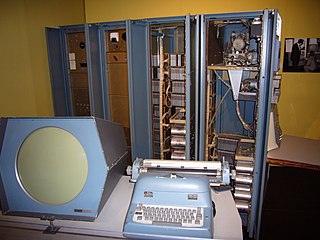 W
WProgrammed Data Processor (PDP), referred to by some customers, media and authors as "Programmable Data Processor, is a term used by the Digital Equipment Corporation from 1957 to 1990 for several lines of minicomputers. The name "PDP" intentionally avoids the use of the term "computer" because, at the time of the first PDPs, computers had a reputation of being large, complicated, and expensive machines, and the venture capitalists behind Digital would not support Digital's attempting to build a "computer"; the word "minicomputer" had not yet been coined. So instead, Digital used their existing line of logic modules to build a Programmed Data Processor and aimed it at a market that could not afford the larger computers.
 W
WThe Rainbow 100 was a microcomputer introduced by Digital Equipment Corporation (DEC) in 1982. This desktop unit had a monitor similar to the VT220 in a dual-CPU box with both 4 MHz Zilog Z80 and 4.81 MHz Intel 8088 CPUs. The Rainbow 100 was a triple-use machine: VT100 mode, 8-bit CP/M mode, and 16-bit CP/M-86 or MS-DOS mode using the 8088.
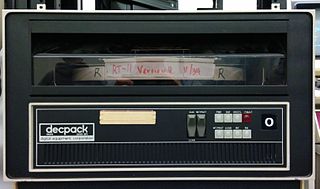 W
WDigital Equipment Corporation's RK05 was a disk drive whose removable disk pack could hold about 2.5 megabytes of data. Introduced 1972, it was similar to IBM's 1964-introduced 2310, and used a disk pack similar to IBM's 2315 disk pack, although the latter only held 1 megabyte.
 W
WSystem Modules are a DEC modular digital logic family which preceded the later FLIP CHIPs. They connect to the units they are plugged into via a set of 22 gold-plated discrete pins along one edge.
 W
WTURBOchannel is an open computer bus developed by DEC by during the late 1980s and early 1990s. Although it was open for any vendor to implement in their own systems, it was mostly used in Digital's own systems such as the MIPS-based DECstation and DECsystem systems, in the VAXstation 4000, and in the Alpha-based DEC 3000 AXP. Digital abandoned the use of TURBOchannel in favor of the EISA and PCI buses in late 1994, with the introduction of their AlphaStation and AlphaServer systems.
 W
WThe Unibus was the earliest of several computer bus and backplane designs used with PDP-11 and early VAX systems manufactured by the Digital Equipment Corporation (DEC) of Maynard, Massachusetts. The Unibus was developed around 1969 by Gordon Bell and student Harold McFarland while at Carnegie Mellon University.
 W
WThe VAX 6000 was a family of minicomputers developed and manufactured by Digital Equipment Corporation (DEC) using processors implementing the VAX instruction set architecture (ISA). Originally, the VAX 6000 was intended to be a mid-range VAX product line complementing the VAX 8000, but with the introduction of the VAX 6000 Model 400 series, the older VAX 8000 was discontinued in favor of the VAX 6000, which offered slightly higher performance for half the cost.
 W
WThe VAX 8000 is a discontinued family of minicomputers developed and manufactured by Digital Equipment Corporation (DEC) using processors implementing the VAX instruction set architecture (ISA).
 W
WThe VAX-11 is a discontinued family of superminicomputers developed and manufactured by Digital Equipment Corporation (DEC) using processors implementing the Virtual Address eXtension (VAX) instruction set architecture (ISA), succeeding the PDP-11. The VAX-11/780 is the first VAX computer.
 W
WThe VAXBI bus is a computer bus designed and sold by the Digital Equipment Corporation (DEC) of Maynard, Massachusetts.
 W
WThe VT05 was the first free-standing CRT computer terminal from Digital Equipment Corporation introduced in 1970. Famous for its extremely futuristic styling, the VT05 presented the user with an upper-case only ASCII character display of 20 rows by 72 columns. The VT05 was a smart terminal that provided cursor addressing using a series of control characters, one of which allowed the cursor to be positioned at an absolute location on the screen. This basic system provided the basis of similar systems in the later and greatly improved VT50 and VT52 series.
 W
WThe VT50 was a CRT-based computer terminal introduced by Digital Equipment Corporation (DEC) in July 1974. It provided a display with 12 rows and 80 columns of upper-case text, and used an expanded set of control characters and forward-only scrolling based on the earlier VT05. DEC documentation of the era refers to the terminals as the DECscope, a name that was otherwise almost never seen.
 W
WThe VT100 is a video terminal, introduced in August 1978 by Digital Equipment Corporation (DEC). It was one of the first terminals to support ANSI escape codes for cursor control and other tasks, and added a number of extended codes for special features like controlling the status lights on the keyboard. This led to rapid uptake of the ANSI standard, becoming the de facto standard for terminal emulators.
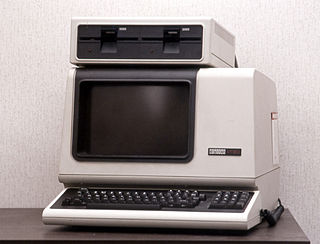 W
WThe VT180 is a personal computer produced by Digital Equipment Corporation (DEC) of Maynard, Massachusetts.
 W
WThe VT220 is an ANSI standard computer terminal introduced by Digital Equipment Corporation (DEC) in November 1983 at a price of $1,395. The VT240 added monochrome ReGIS vector graphics support to the base model, while the VT241 did the same in color. The 200 series replaced the successful VT100 series, providing more functionality in a much smaller unit with a much smaller and lighter keyboard. Among its major upgrades was a number of international character sets, as well as the ability to define new character sets.
 W
WThe VT320 was an ANSI standard computer terminal introduced by Digital Equipment Corporation (DEC) in 1987. The VT320 was the text-only version, while the VT330 added monochrome ReGIS, Sixel and Tektronix 4010 graphics, and the VT340 added color.
 W
WThe VT420 was an ANSI standard computer terminal introduced in 1990 by Digital Equipment Corporation (DEC). The 420 was the only model in the 400 series, replacing the VT320. There were no color or graphics-capable 400 series terminals; the VT340 remained in production for those requiring ReGIS and Sixel graphics and color support. The entire lineup of VT300s and VT420 was eventually replaced by the relatively unknown VT500 series starting in 1993.
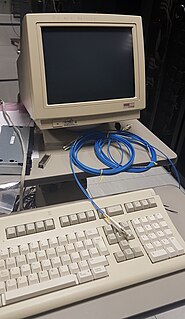 W
WThe VT520 is an ANSI standard computer terminal introduced by Digital Equipment Corporation (DEC) in 1993 and 1994. The VT520 is a multi-session monochrome text-only terminal with a built-in 14" monitor. The VT510 was a single-session version, while the VT525 added color support and used a separate external monitor.